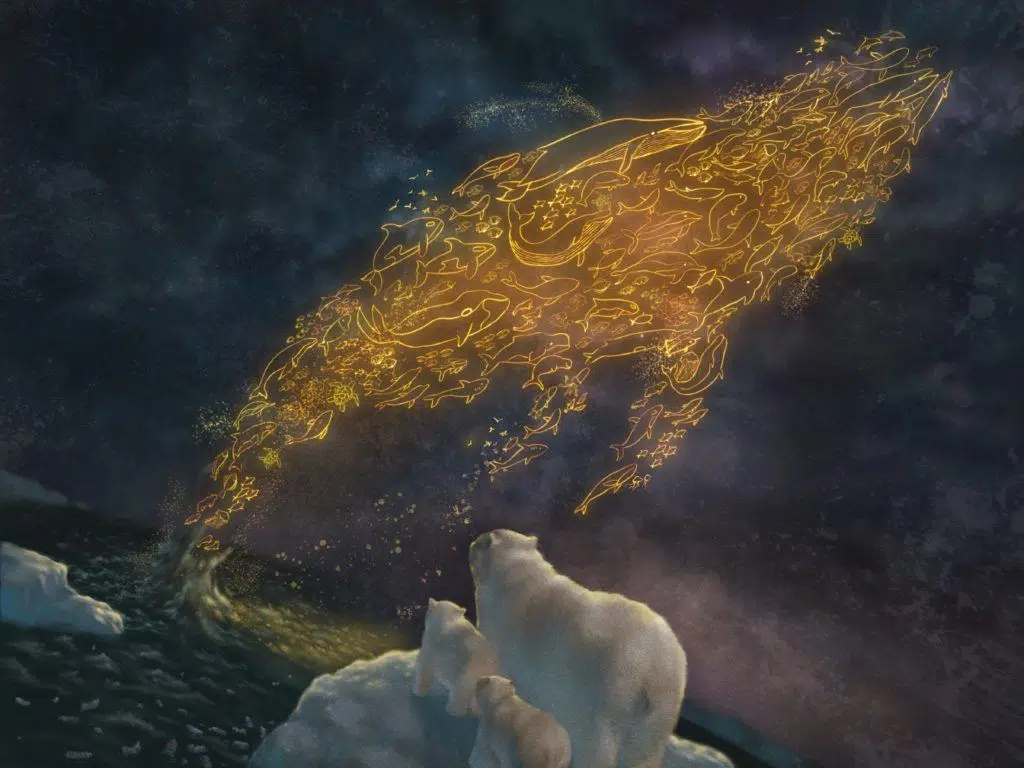
Soaring Hope
Mercer Island, WA
2020, Senior, Art

Reflection
Reflection
According to NASA, global temperature rise, warming oceans, shrinking ice sheets, glacial retreat, decreased snow cover, sea level rise, declining Arctic sea ice, extreme events, and ocean acidification are some of the most pressing problems that are caused by climate change. And the root of these problems? Us, humans. Our actions caused the current warming to occur at approximately ten times faster than the average rate of ice-age-recovery warming according to NASA's “Global Warming” report. Soaring Hope offers a dystopian view of our planet. The sky is full of storms while the ocean is destroyed. Plastic bottles and wastes are floating all over the place while icebergs are scarce. This will be the future of our planet if we continue with our actions. The polar bear family, standing on a piece of broken ice, is particularly heartbreaking; they are perhaps pondering what they have done wrong to deserve the devastation of their homes. Although more needs to be done (like international policies and agreements between countries pushing for cleaner forms of energy, city and regional level public transport upgrades, sustainable city planning, etc.), there is still hope for change, which I chose to illustrate using the form of a humpback whale. By switching to renewable energy, reducing water waste, reducing food waste, recycling, and driving more fuel-efficient cars, ordinary people like you and I can contribute to positive change. The golden humpback whale, comprised of different organisms, soars up from the hopeless ocean. According to a study in 2019 by Zerbini et al., the number of humpback whales in the South Atlantic has rebounded from the brink of extinction. Our environment can rebound too, if we want it to.
